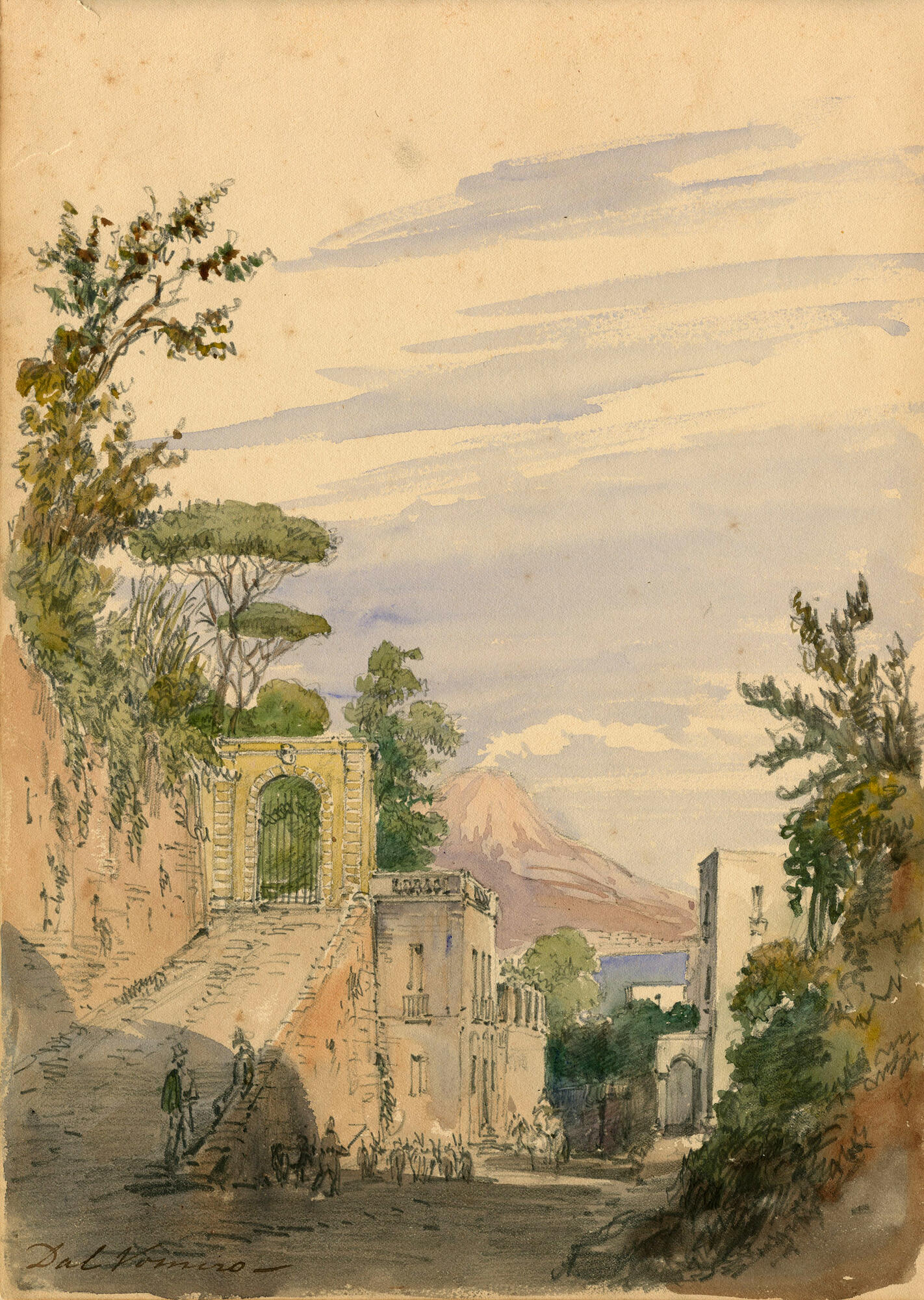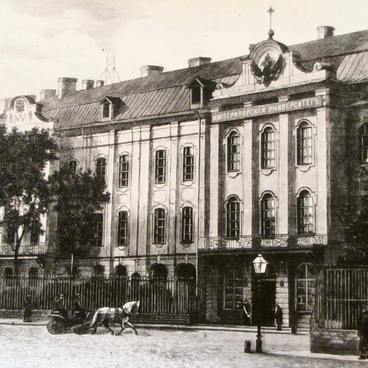Zhorzhina Yegorovna (born Meyendorf, married Chicherina), according to her son, was ‘one of the purest and most elevated natures.’ That educated woman was not only fond of painting, but also brought up in children an artistic taste, a love of art.
Note that throughout her artistic career, the Baroness preferred white or colored paper, and also used pencils, charcoal and watercolors.
The fund of the house-museum contains 104 sheets, some of which have been preserved separately, but most of them are collected in 4 albums. Relatively speaking, experts attribute 2 of them to the ‘Italian’ period, when the artist explored the European peninsula. In the paintings one can recognize landscapes and architecture in large cities. For example, in Pisa, Florence or Sorrento.
Zhorzhina Yegorovna wrote that work in the late 50s of the 19th century. Unfortunately, researchers do not know the exact date. However, she pointed to a specific location - Vomero.
The traveler depicted in the drawing the gate to the monastery of St. Martin, which was built in 1325 and remained in operation until 1866. In addition to Certosa di San Martino, monochromatic buildings and bright vegetation are clearly visible in the foreground of the watercolor, with the Vesuvius volcano and the Gulf of Naples in the background.
Let’s clarify that Vomero is a prestigious area located on a hill. The beginning of its development dates back to 1884, when a cholera epidemic hit Italy, so wealthy families moved away from megacities and rebuilt their estates. In addition, a good view of Naples and the coast of the Tyrrhenian Sea opened up from the hill, near which many archaeological sites were concentrated. For example, the ruins of Baia and the excavations of Herculaneum or Pompeii.
Currently, the territory of the monastery of the Order of the Cortesians is given over to the national museum. There you can admire a collection of Christmas creches and more than 900 paintings from the authors of the Neopolitan school. Modern residents and tourists use the funicular or the metro to get to the place.
Note that throughout her artistic career, the Baroness preferred white or colored paper, and also used pencils, charcoal and watercolors.
The fund of the house-museum contains 104 sheets, some of which have been preserved separately, but most of them are collected in 4 albums. Relatively speaking, experts attribute 2 of them to the ‘Italian’ period, when the artist explored the European peninsula. In the paintings one can recognize landscapes and architecture in large cities. For example, in Pisa, Florence or Sorrento.
Zhorzhina Yegorovna wrote that work in the late 50s of the 19th century. Unfortunately, researchers do not know the exact date. However, she pointed to a specific location - Vomero.
The traveler depicted in the drawing the gate to the monastery of St. Martin, which was built in 1325 and remained in operation until 1866. In addition to Certosa di San Martino, monochromatic buildings and bright vegetation are clearly visible in the foreground of the watercolor, with the Vesuvius volcano and the Gulf of Naples in the background.
Let’s clarify that Vomero is a prestigious area located on a hill. The beginning of its development dates back to 1884, when a cholera epidemic hit Italy, so wealthy families moved away from megacities and rebuilt their estates. In addition, a good view of Naples and the coast of the Tyrrhenian Sea opened up from the hill, near which many archaeological sites were concentrated. For example, the ruins of Baia and the excavations of Herculaneum or Pompeii.
Currently, the territory of the monastery of the Order of the Cortesians is given over to the national museum. There you can admire a collection of Christmas creches and more than 900 paintings from the authors of the Neopolitan school. Modern residents and tourists use the funicular or the metro to get to the place.




